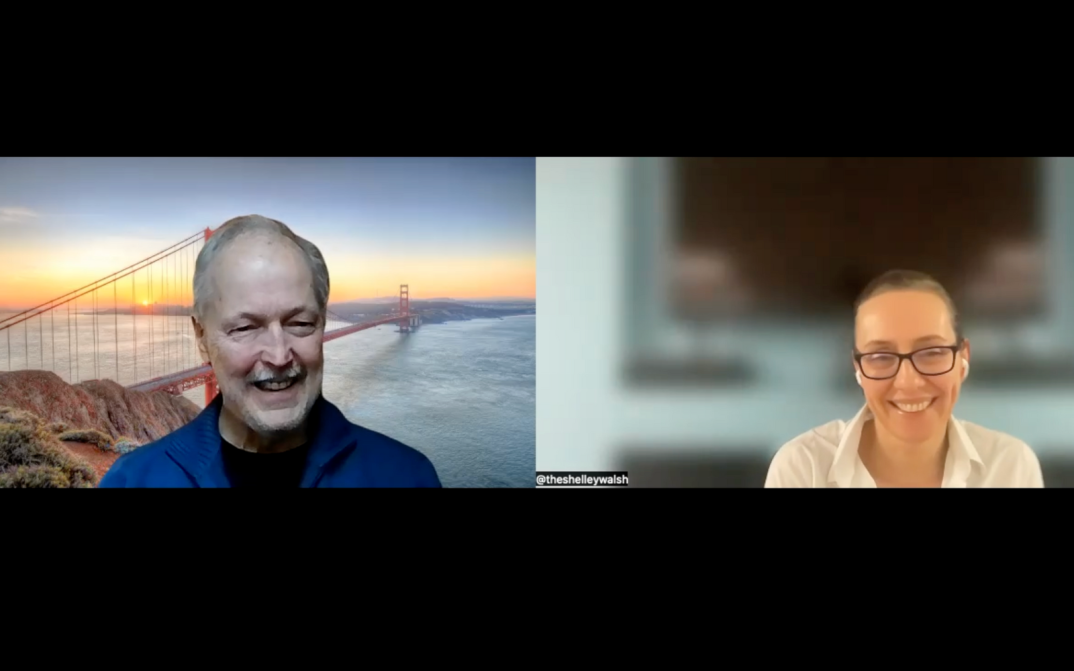Building a brand and focusing on brand awareness has become a current topic of discussion across SEO social media, but this is not a new concept; it’s just surfacing again.
After the infamous Panda update in 2011, the rise of the “brand” entered into the conversation as Google began to put its emphasis on surfacing trusted brands to push out lesser-known exact match domains.
SEO professionals have always understood how important it is to develop their own “personal brand.” Forums, coveted conference speaking slots, blogging, and writing books are proven and successful ways to build trust and authority in the industry. Or any industry.
Over the last few years, I have been speaking to Pioneers of the industry about the early days of SEO and their experience navigating twenty-five years of Google.
One of the recurrent themes across these interviews is that most of the Pioneers built a personal brand either through design or accident and their hard-earned reputation has helped to grow their SEO agency or business.
Building a brand is a long-term strategy that is not easy and cannot be gamed, which is why it’s such a strong signal of trust and reputation.
Eric Enge leveraged data studies and writing books to gain recognition, which culminated in him being named the Search Personality of the Year in 2016 by US Search Awards. Eric is well-respected in the industry for his ethical approach to SEO and business and his use of quality content to build reputation.
Although he had to learn this the hard way through trial and error.
In the early days, Eric started out with considerable success from ranking lead generation sites through link schemes and buying links, until a manual penalty turned off his hugely profitable income overnight. To get the penalty overturned took over a year of investment and diligence with a commitment to follow a “white hat” approach.
Eric was so grateful when he got a second chance, he has been an advocate for an ethical approach to SEO ever since. He has proven that building quality content that gives back to an industry is a better long-term option than buying links.
What stands out in Eric’s story is how each investment of his time led to the next opportunity and the next. His consistent application of effort and hard work was what led him to be invited to “The Art of SEO.”
This same story of consistent effort is replicated across most successful people. You don’t get “overnight success.”
For example, I have known Aleyda Solis for 14 years and during this time, I have never known anyone to work as hard at speaking, producing content and continually giving to the industry. She is deservedly one of, if not the most, influential person in SEO today.
I talked to Eric about a wide range of topics, and this article focuses on a part of our conversation about investing in good content. It’s just a small excerpt of our wide-ranging discussion and you can watch the full video here.
Eric Enge Talks About His Journey Of Creating Content And Value
Shelley Walsh: “Eric, you started writing for Search Engine Watch in 2008, and from your experience, you said that you were given a second chance and that really changed the way you looked at everything. Did that have an impact on the direction of making you want to start giving back to the community in any way?”
Eric Enge: “It’s all part of the same sequence of events, as it were. As I mentioned, after we got back in the index in December 2005, Matt Cutts – since I had a certain amount of contact with him – followed some of the content I published. Then, prior to 2008, he had actually awarded me runner-up for Best White Hat Blog. That’s when Rebecca Lieb and Elizabeth Osmeloski of Search Engine Watch decided to give me a shot at writing for them. That was all search news and I was writing a post a day.
That exposure put me in a position where I had much more of an audience than I did on my site. But I was also getting to a point where I had begun to develop some visibility from the positions I was taking in my approach to Google, and I had a certain amount of visibility developing inside of Google.
I managed to persuade Shashi Seth who was working at Google to let me interview him and publish it on the Stone Temple blog. That was my first interview of an industry luminary, if you will. He later had a VP role at Yahoo, so he had quite a notable career.
I’d also been following this guy called Rand Fishkin. One day, Rand wrote a post that said, Surely someone would want to get the 10,000 links and 40,000 social shares that would result from doing a study comparing how analytics programs measure traffic and the differences between them.
I was the first to respond to this, and I said something like, ‘I got you covered, I’m going to do this.’ The study turned into hundreds of hours of work, because getting sites lined up to agree to run multiple different analytics programs at the same time and the tracking of all the data and doing all that was very intense.
But I did it, and I published the Web Analytics Shootout. It didn’t get 10,000 links or 40,000 social shares, by the way, but it did attract Rand’s attention that I had followed through on what was obviously a massive effort. From this, I got my first speaking engagement at Search Engine Strategies in San Jose.
All the while, the continued messaging was received well by people at Google, and they understood that this was more than a tactic for me. I think that resonated a lot. As I said earlier, when you give to someone or give back to someone, strangely enough, sometimes it comes back your way.
After fixing the early problems, I never again bought a link, never spammed a thing, and did extremely well. I proved, even back in the heyday of link buying, that you didn’t need to do it to build a successful business.”
Walsh: “You’ve just rewritten the fourth edition of “The Art Of SEO” (probably the best-known book in the industry). But how did that come about in 2009, and how did you become the lead author alongside Rand Fishkin, Stephan Spencer, and Jessie Stricchiola.”
Enge: “Between starting to speak, writing at Search Engine Watch, the interviews I was publishing on my blog, and also doing data-driven research studies, I was attracting a lot of attention to Stone Temple and I developed some recognition.
Back in 2008, Rand and Stephan had decided to collaborate on a book and persuaded O’Reilly to let them publish through them. Separately, Jessie Stricchiola had signed an agreement with O’Reilly for “The Art of SEO” title, but they were having trouble progressing. Then O’Reilly put Jessie together with Stephan and Rand, and they tried to do something, but it was going too slowly.
At another SES, Stephan told me about this project involving him and Rand and Jessie, and that they needed someone to drive the process because they were having trouble, and didn’t have enough time, etc.”
The understanding was that I would be the last named author. Thirteen weeks later, I had written the first draft of all 13 chapters. I heavily leveraged stuff that each of them had previously published and mashed it into a single book. Then the review process started, which is what you underestimate with a book and how grueling that will be.
After all the work I put in, I think it was Rand who brought up that he didn’t think it was appropriate that I’d be the last-named author. After doing the majority of everything, I didn’t think it was appropriate either.
Stephan wanted to be the first named author, so we had a very mature discussion about the whole thing and we needed a way to break that deadlock. Jessie’s novel idea was to look at the New York Times headline from the following day, and from the first letter of the first headline, the name that was closest would be the lead.
I woke up at three in the morning to look at the New York Times online. Every other headline on the entire edition that day began with the letter S. The only one that didn’t was the main headline which was an ‘F’!
The whole book and I’m doing a content marketing course – they’re all about just wanting to give people tools to help them in their careers. I know Stephan has said this to me many times too, so many people have benefited from the various editions of “The Art of SEO.” The industry has been so good to me and this is my way of giving back.”
How To Build Trust And Credibility
What you can take from this article is that applied effort and hard work are consistent across all successful people I know in this industry. There are no shortcuts to recognition.
At SEJ, we work with some of the best contributors in the industry and they have all proven themselves through the value they give to the industry through their efforts.
As we learn to adapt to the introduction of AI and how that might change the industry and ways of working, content production is the one area that stands the most to lose.
Any type of content that is difficult to produce and takes effort is most likely to resist the proliferation of AI content.
Thought leadership, interviews, data studies and experiments are where you can build credibility. And also, kind of ironically, where you stand the most chance of being cited by generative AI.
Thank you to Eric Enge for being my guest on SEO Pioneers.
More resources:
Featured Image from author




